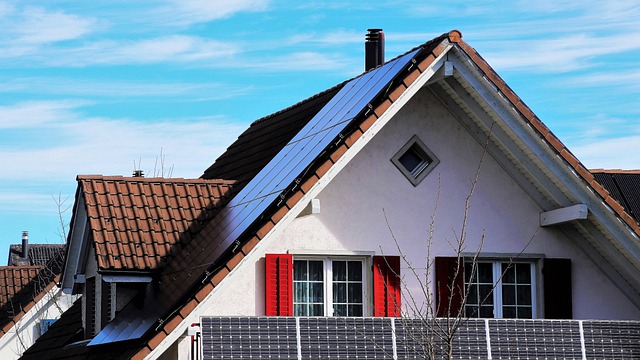Short-term roofing solutions are crucial for immediate protection against harsh elements in scenarios like sudden weather events or construction projects with tight deadlines. These include portable systems like tarps, canvas sheets, and prefab panels, which offer cost-effective safety without compromising quality. Installation demands specific tools (ladders, gear, connectors, fasteners) and materials, while a comprehensive guide details the process, emphasizing edge stabilization and tarp deployment to prevent leaks. Regular inspections and quick repairs extend the lifespan of temporary roofs, making them ideal for emergency cover, construction sites, events, and weatherproofing.
Need a quick fix for your roofing needs? Discover the efficiency of short-term roof solutions, perfect for unexpected situations like leaks, storms, or construction sites. This guide explores when and why temporary roofing is essential, outlining a straightforward process for fast installation within hours. From tools and materials to maintenance tips, learn how to provide an effective emergency roof cover with portable roofing systems suitable for events or construction projects, ensuring weatherproof protection until a permanent fix.
- Understanding Short-Term Roof Solutions: When and Why They're Necessary
- Preparing for Fast Installation: Tools and Materials Required
- Step-by-Step Guide to Quick and Efficient Temporary Roof Installation
- Maintaining and Repairing Your Temporary Roof: Ensuring Weatherproof Protection
Understanding Short-Term Roof Solutions: When and Why They're Necessary
Short-term roof solutions are essential for situations where immediate coverage is required, whether it’s an unexpected weather event or a construction project with tight deadlines. These temporary roofing options offer a quick and efficient fix, providing an emergency roof cover to protect against harsh elements until a permanent solution can be implemented. When time is of the essence, such as during storms or festivals, having a readily available, weatherproof temporary roof can make all the difference in ensuring minimal damage and keeping activities uninterrupted.
Construction sites also frequently rely on these short-term roofing solutions to safeguard against environmental factors while buildings are under development. Portable roofing systems, designed for ease of installation and removal, enable construction teams to quickly erect a protective barrier, facilitating work and preventing debris from falling onto nearby structures or public spaces. With their versatility and efficiency, temporary roof installations have become indispensable in various industries, offering a practical and cost-effective way to manage unforeseen circumstances without compromising on protection and safety.
Preparing for Fast Installation: Tools and Materials Required
Preparing for a fast installation of short-term roof solutions requires having the right tools and materials on hand. For any temporary roofing project, whether it’s an emergency roof cover or a weatherproof solution for a construction site, essential tools include ladders, safety gear, and a variety of connectors and fasteners specific to the chosen material. In terms of materials, portable roofing options like tarps, canvas sheets, or pre-fabricated panels are commonly used. These versatile materials can quickly transform into an effective event roof cover or short-term roofing solution.
Additional considerations include measuring tape for accurate cuts and a tool kit for cutting and securing the chosen material. In some cases, additional support structures like frames or trusses might be needed, depending on the size and expected load of the temporary roof. Having these in place before beginning installation can significantly speed up the process, ensuring a sturdy and safe emergency roof cover or construction site roofing solution.
Step-by-Step Guide to Quick and Efficient Temporary Roof Installation
Step-by-Step Guide to Quick and Efficient Temporary Roof Installation
Before beginning, assess the area and gather all necessary materials, including a temporary roofing system, tarps, fasteners, and safety gear. Start by clearing the work area, ensuring it’s free from debris or obstacles. Next, prepare the surface by sweeping and inspecting for any damage that needs repair. If using an existing structure, temporarily secure the edges of the roof to prevent shifting during installation.
Unroll the chosen temporary roofing material, following the manufacturer’s instructions. Secure the edges with appropriate fasteners, creating a weatherproof seal. For added protection, drape tarps over adjacent areas prone to leaks or debris fall. Throughout the process, double-check connections and fastenings for strength and stability. Once complete, conduct a thorough inspection from multiple angles to ensure all joints are sealed and secure, providing an effective emergency roof cover or event roof solution.
Maintaining and Repairing Your Temporary Roof: Ensuring Weatherproof Protection
Maintaining and repairing your temporary roofing is crucial for ensuring continuous weatherproof protection, especially in construction sites or during events where a reliable roof cover is essential. Regular inspections are key to identifying any signs of damage, wear, or leaks promptly. Quick repairs can prevent minor issues from escalating into major problems that could disrupt schedules and cause further damage.
Simple maintenance tasks like tightening loose panels, repairing sealed joints, and replacing worn-out components can significantly extend the lifespan of your temporary roof. Using high-quality replacement parts and following manufacturer guidelines for repairs is vital to maintain the integrity of the weatherproofing. Regular cleaning to remove debris buildup ensures optimal performance of the temporary roofing system, enhancing its overall effectiveness in protecting against harsh weather conditions.
In today’s world, where unexpected events and emergencies can arise at any moment, having a swift and reliable solution for short-term roofing is invaluable. Whether it’s a construction site in need of a temporary cover or an event organizer seeking an emergency roof, these portable roofing solutions offer a fast and effective fix. By following the simple steps outlined in this article—from preparing essential tools to ensuring weatherproof protection—you can efficiently install and maintain a temporary roof, providing much-needed shelter and peace of mind until a permanent solution is in place.
